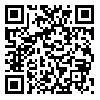BibTeX | RIS | EndNote | Medlars | ProCite | Reference Manager | RefWorks
Send citation to:
URL: http://jha.iums.ac.ir/article-1-1186-en.html
Introduction: Inclusive, sufficient, precise and up to date information is necessary for planning in a health information system. Health Population Information Management System (HPIMS) is a system that collects, stores, retrieves, analyzes, interprets, and distributes health population information for prevention and treatment. The aim of this study was first to compare Health Population Information Management System in health ministry, Iran statistics center, vital registry organization and United Nations, second, to propose a suitable model for Iran. This study was conducted to compare the features of Iran Health Population Information Management System with the United Nations standards.
Methods: This was an applied cross-sectional study. The population included Iran Health Population Information Management Systems. The instruments of the study were a questionnaire and a check list. The data were collected through observation and an interview. The sources of information consisted of the staff, scientific documentation and the Internet. Criteria Rating Technique and descriptive statistics were used for data analysis.
Results: The findings showed an absence of timely, relevant, comprehensive and sufficient reporting in data registration system in Iran. Moreover, the organizations in charge of HPIMS had parallel functions which would lead to contradictory reports. Health Population Information, published by the Ministry of Health differed from that of Iran Statistics Center and other data registry organizations. Overall, HPIMS in the Ministry of Health was ranked as “very good” while the other organizations were ranked as “good”.
Conclusion : The findings suggest that the information systems can only influence decisions if they are relevant, trustworthy and available for decision makers. However, information systems in Iran are inadequate to satisfy the needs of management. Therefore, it seems necessary to reform and design a suitable model representing accountability of organizations in regard to their duties and workflow. It is also suggested to decrease parallel functions and resources through a sharing system.
Received: 2012/11/11 | Accepted: 2013/07/22 | Published: 2013/07/22
| Rights and permissions | |
 |
This work is licensed under a Creative Commons Attribution-NonCommercial 4.0 International License. |





